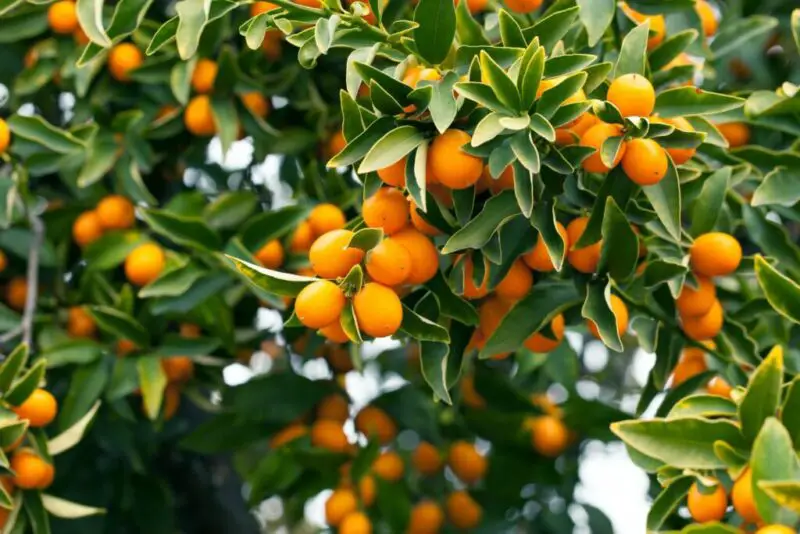Kumquat trees are a popular choice for Florida gardeners due to their vibrant, attractive fruit and hardy growth habits. These small citrus trees are easy to care for, and their delicate flavor and tender texture make them a favorite among growers and consumers alike.

Understanding the Climate and Soil Requirements for Kumquat Trees in Florida
Kumquat trees are native to Southeast Asia and thrive in warm, tropical climates like Florida. They are extremely hardy and can grow in a variety of soil types, including clay, sand, and loam. However, for optimal growth and fruiting, kumquat trees require well-draining soil that is rich in organic matter.
Choosing the Right Kumquat Tree for Your Garden
There are many different varieties of kumquat trees, each with its own unique characteristics. Some of the most popular types of kumquat trees for growing in Florida include the Nagami, Marumi, and Meyer kumquats.
Placing Your Kumquat Tree in the Garden
When planting your kumquat tree, it is important to choose a location that will receive plenty of sunlight. Kumquat trees prefer full sun to partial shade and need at least 6 hours of direct sunlight each day to thrive. In addition, the tree should be planted in a location that is protected from strong winds, which can cause damage to the branches and fruit.
Proper Watering Techniques for Your Kumquat Tree
Kumquat trees are drought-tolerant, but still, require regular watering to promote healthy growth and fruiting. The frequency of watering will depend on the soil type and the local climate, but as a general rule, kumquat trees should be watered deeply once or twice a week. To avoid over-watering, it is important to allow the soil to dry out slightly between waterings.
Fertilizing Your Kumquat Tree
To ensure that your kumquat tree has all of the necessary nutrients for healthy growth and fruiting, it is important to fertilize regularly. A balanced, slow-release fertilizer is recommended for best results. Fertilize your kumquat tree every 6 to 8 weeks during the growing season, and reduce the frequency of fertilization in the winter.
Pruning Your Kumquat Tree
Pruning is an important part of caring for your kumquat tree, as it helps to promote healthy growth and increase fruit production. Prune your kumquat tree in late winter or early spring, removing any dead or damaged branches, and shaping the tree to your desired size and shape.
Pests and Diseases of Kumquat Trees in Florida
Kumquat trees are relatively resistant to pests and diseases, but it is still important to be vigilant for potential issues. Some common pests of kumquat trees include scale insects and mealybugs, while diseases like citrus canker and citrus greening can also be a problem. If you notice any issues with your kumquat tree, it is important to take action quickly to prevent further damage.
Enjoying Your Kumquat Tree
Growing a kumquat tree in Florida can be a rewarding and enjoyable experience, and the fruit is a delicious addition to any home garden. Whether you are looking for a hardy, low-maintenance citrus tree, or simply want to add some sweet, juicy flavor to your yard, a kumquat tree is a great choice. So why wait? Start your kumquat tree journey today and enjoy all the benefits of growing your own fresh, juicy kumquats right in your own backyard.
Conclusion
Growing a kumquat tree in Florida requires a bit of patience and care, but the results are well worth it. With the right climate, soil, and care, your kumquat tree will thrive, producing juicy, delicious fruit year after year. Whether you are an experienced gardener or a beginner, a kumquat tree is a great choice for your Florida garden. So why not try growing one today and discover the joys of fresh, home-grown citrus fruit for yourself?
Frequently Asked Questions About Kumquat Trees
What is the best way to care for Kumquat Trees?
The best way to care for Kumquat Trees is to provide them with well-drained soil and a location that receives full sun. They are tolerant of heat and humidity, so they are well suited to Florida’s climate. They should be watered regularly, especially during dry spells, and fertilized with a balanced, slow-release fertilizer twice a year. It’s also important to prune the tree regularly to maintain its shape and to remove any diseased or damaged wood.
When do Kumquat Trees bear fruit?
Kumquat Trees usually begin to bear fruit in their second or third year after planting. They typically produce fruit in the winter and early spring, although some varieties may bear fruit at other times of the year. The tree’s fruit production may be improved by planting multiple trees, as kumquats are self-pollinating, but cross-pollination from another tree may result in a higher yield.
Can Kumquat Trees be grown in pots?
Yes, Kumquat Trees can be grown in pots, which makes them a great option for those who have limited space or who want to bring the tree indoors during the colder months. When growing kumquats in pots, it’s important to use a well-draining potting mix and to make sure the tree is getting enough light and water. It may also be necessary to repot the tree into a larger container as it grows.
What are some common pests and diseases that can affect Kumquat Trees?
Some common pests that can affect Kumquat Trees include scale insects, mealybugs, and mites. Diseases that can affect kumquats include citrus canker, citrus greening, and citrus rust mite. To prevent these issues, it’s important to maintain healthy growing conditions, keep the tree free of any diseased or damaged wood, and use a pest and disease control program as recommended by a local garden center or horticulturist. Regular monitoring and prompt treatment of any issues can help to keep the tree healthy and productive.
